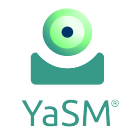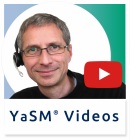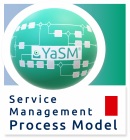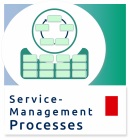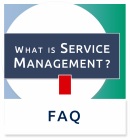SIAM
SIAM is a "management methodology that can be applied in an environment that includes services sourced from a number of service providers" [3]. The acronym SIAM stands for "Service Integration and Management".
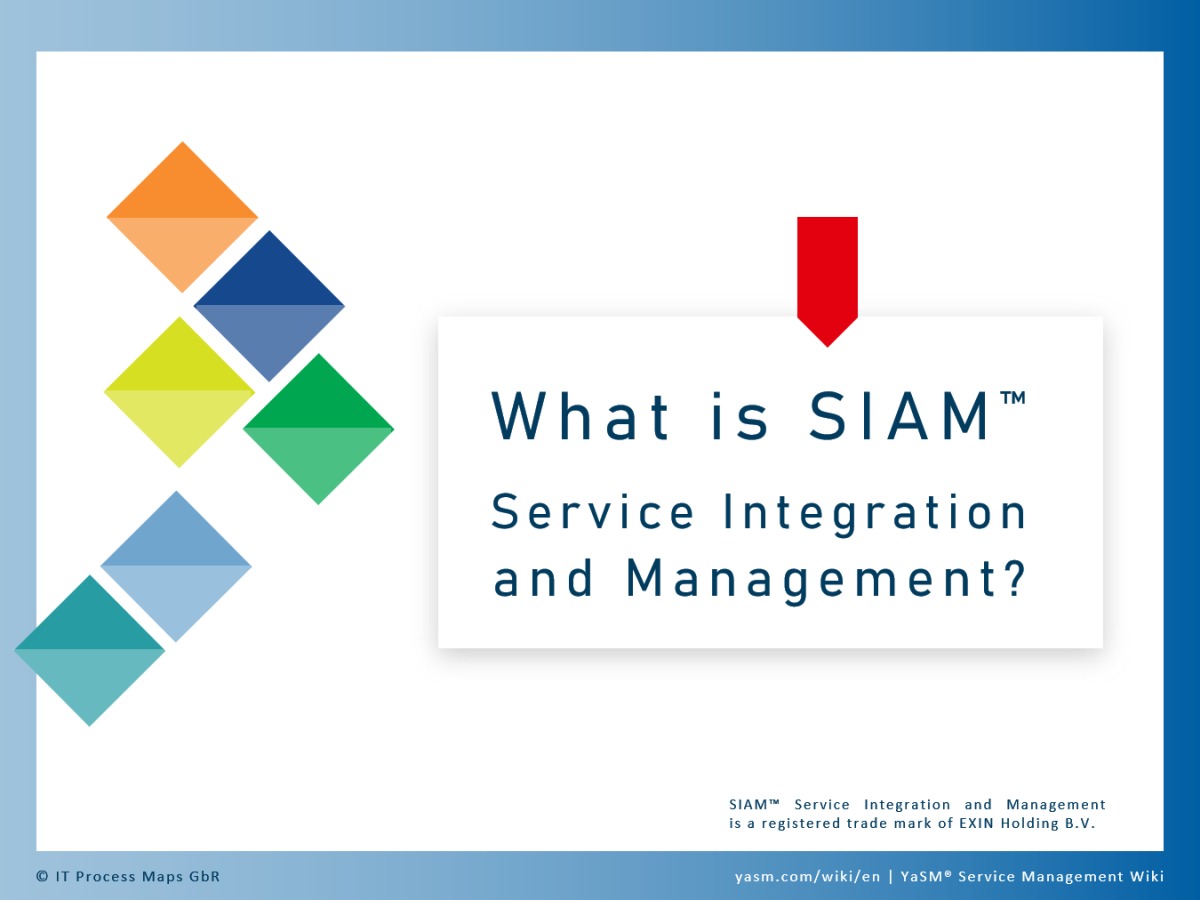
An introduction to SIAM™ and the SIAM Foundation Body of Knowledge.
How was SIAM created?
The SIAM concept emerged around 2005 from within the UK public sector, when new types of services, such as cloud services, became more widely available. These services offered better value for money and improved flexibility, but a reliable and consistent approach was needed to coordinate multiple service providers ("multi-provider management").
SIAM didn't start from nothing. Other best practice methodologies developed by the British government since the 1980s, such as ITIL® and PRINCE2®, were an obvious starting point. SIAM, however, does not seek to replace these frameworks but to augment them with a special focus on multi-sourced environments.
SIAM was at first adopted by the public sector in the UK and large IT service providers. Interest picked up when, in 2010, the UK government published a new ICT strategy calling for a flexible approach using multiple service providers. AXELOS, the current owner of the ITIL framework, published several white papers in 2015, and in 2016 the SIAM Foundation Architect Group was formed by Scopism
This has led to the publication in 2017 of the SIAM Foundation Body of Knowledge [3] and SIAM Professional BoK [5], and to the introduction of the SIAM certification scheme.
A second, completely revised edition of SIAM (at times referred to as SIAM 2.0 or SIAM 2020) was published in April 2020. This new edition of SIAM reflects the latest thinking in service management and brings it in line with other service management frameworks and standards that have recently been updated, such as ITIL® 4, VeriSM™ and ISO 20000.
How does SIAM compare with other service management frameworks?
All service management frameworks and standards acknowledge that most service providers use supporting services operated by third parties. They typically include activities for managing suppliers and concepts such as underpinning contracts and the service portfolio to 'orchestrate' their externally supplied services and align them with the requirements of their customer-facing services.
So one could argue that organizations following the advice of other service management best practice, such as ITIL and ISO 20000, are set up as 'service integrators' already.
Indeed, SIAM is sometimes called an 'adaptation' or 'evolution' of ITIL. Many processes in a SIAM 'ecosystem' are familiar processes like incident management and business relationship management, and the SIAM approach should be combined with the ITIL service lifecycle approach.
The point is that SIAM provides guidance for enhancing and adapting these practices and processes for multi-sourced service delivery models.
SIAM can also be combined with other practices from the service management domain and beyond, in line with the specific requirements of the organization. In particular, philosophies like Lean, Agile and DevOps have been gaining traction, helping organizations to build more efficient SIAM models.
The key concepts in SIAM can also be found in YaSM service management:
- What is the difference between YaSM and SIAM?
- How do the YaSM process templates support the adoption of SIAM processes?
What guidance is contained in SIAM?
The following overview of the guidance contained in SIAM is based on three publications by Scopism:
- SIAM Foundation Body of Knowledge [Scopism, 2020-1],
- SIAM Process Guides [Scopism, 2020-2],
- and SIAM Professional Body of Knowledge [Scopism, 2020-3].
All can be downloaded free of charge from the Scopism website, and their contents are the source material for the EXIN BCS Service Integration and Management certifications.
SIAM Foundation Body of Knowledge
Introduction to SIAM
The first chapter of the SIAM BoK introduces SIAM and its origins in other service management practices, and provides an overview of what is included in the SIAM methodology.
The SIAM ecosystem and the service integrator
At the highest level, SIAM is presented as an 'ecosystem', consisting of three layers:
- Customer organization (including retained capabilities)
- Service integrator
- Service provider(s).
The service integrator layer is SIAM's unique concept to ensure appropriate governance across all service providers.
SIAM and processes
SIAM is not a process, nor does it define a set of processes that organizations should introduce. But SIAM acknowledges that processes are a key element of the SIAM models adopted by individual organizations, and advises that organizations use other processes, which are often familiar ones from other service management practices like ITIL and ISO 20000. These processes should be adapted and enhanced with the SIAM guidance, as necessary to support the integration of multiple-sourced services.
To help organizations with choosing the right processes, the SIAM BoK includes a collection of 'commonly used' processes with high-level descriptions (see below: SIAM Process Guides).
SIAM structural elements
SIAM "Structural elements" are organizational entities that have specific responsibilities in the SIAM ecosystem.
SIAM introduces, and gives examples for, three types of structural element:
- Boards
- Process forums
- Working groups.
Drivers for SIAM and the SIAM business case
The authors of the SIAM BoK also provide arguments for adopting the SIAM approach. They describe the drivers and motivations for moving to a SIAM model, which can be used to create a business case for the transition to SIAM.
The SIAM roadmap
The SIAM roadmap is a high-level plan for the implementation of SIAM as part of an organization's operating model. The roadmap consists of four stages:
- Discovery & strategy
- Plan & build
- Implement
- Run & improve.
For each stage, the SIAM BoK provides examples of:
- Objectives
- Triggers
- Inputs
- Activities
- Outputs.
The SIAM roadmap includes activities for running and improving the organization's SIAM model, so it's not the description of a one-time initiative but of an ongoing effort to adopt and maintain the SIAM ecosystem. The SIAM roadmap is thus arguably similar to the service lifecycle concept known from other service management practices.
SIAM structures
There are various options for setting up the service integrator layer. SIAM describes four common structures and discusses their advantages and disadvantages:
- Externally sourced: An external party takes the role of the service integrator.
- Internally sourced: The service integration capability is provided with the organization's internal resources.
- Hybrid: The organization collaborates with an external party to provide the service integration capability.
- Lead supplier: The role of service integrator is taken by an external party that is also an external service provider.
SIAM and other practices
SIAM builds on other practices and adapts them to work in a multi-service provider environment. The section about SIAM and other practices is thus a key part of the SIAM guidance.
Practices covered in SIAM include
For each practice, SIAM provides a short summary and highlights its relevance in a SIAM 'ecosystem'.
SIAM roles and responsibilities
Another key element in a SIAM ecosystem are defined roles and responsibilities. The SIAM roadmap (see above) therefore includes activities to define, allocate and monitor roles and responsibilities. RACI matrices are a useful tool for mapping the SIAM roles.
SIAM presents a list of typical roles that are mostly familiar from other service management practices, including their typical accountabilities and responsibilities. These roles are assigned to high-level roles that broadly correspond to the layers of the SIAM ecosystem:
- Customer organization
- Retained capabilities
- Service integrator
- Service provider
SIAM practices
SIAM introduces four types of practice:
- People practices
- Process practices
- Measurement practices
- Technology practices.
For each practice, the SIAM Foundation BoK gives an example and illustrates how it can be applied in a SIAM ecosystem.
SIAM cultural considerations
Organizations that wish to adopt the SIAM approach face specific cultural challenges, and SIAM includes guidance for three particular cultural aspects that should be considered:
- Cultural change
- Collaboration and cooperation
- Cross-service provider organization.
Challenges and risks
The last section of the SIAM BoK describes common challenges and risks associated with adopting the SIAM approach, and ways of addressing those challenges and risks.
SIAM Process Guides
The SIAM Process Guides provide a list of some common processes that support SIAM, including
- Process purpose
- Specific SIAM considerations
- High-level activities
- Example roles
- Example metrics
- Example inputs and outputs
SIAM Professional Body of Knowledge
The SIAM Professional BoK builds on the SIAM foundation publication and provides practical guidance for each of the four stages in the SIAM roadmap. This includes advice on how to address the typical challenges and pitfalls when adopting the SIAM approach.
In addition, the SIAM Professional BoK contains real-world case studies and an overview of how Lean, DevOps and Lean principles can be considered within the SIAM roadmap and incorporated into the SIAM ecosystem.
What SIAM certifications are available?
The SIAM training and certification program is operated by a collaboration between BCS, EXIN, APMG and Scopism.
SIAM Foundation and Professional certifications have been available since 2017. On 1 April 2020, the certification content has been updated to reflect the latest changes in the second edition of SIAM.
For those who wish to prepare for the certification exams, the SIAM Foundation BoK and the SIAM Professional BoK are available as free downloads from the Scopism website (see below).
Where can I learn more about SIAM?
If you want to know more about SIAM, we recommend the Scopism website. Scopism provides articles and documentation about SIAM, and you can download several complete publications for free, such as:
- SIAM Key Facts
- SIAM Foundation Body of Knowledge
- SIAM Process Guides
- SIAM Professional Body of Knowledge
References
[1] Holland, K. (2015). An introduction to Service Integration and Management and ITIL®. AXELOS Limited.
[2] Dorst, S., Major-Goldsmith, M. & Robinson, S. (2015). Who is the King of SIAM? AXELOS Limited.
[3] Dorst, S., Major-Goldsmith, M. and others (2020, 1). Service Integration and Management (SIAM™) Foundation Body of Knowledge, Second edition. Scopism.
[4] Dorst, S., Major-Goldsmith, M. and others (2020, 2). Service Integration and Management (SIAM™) Process Guides, Second edition. Scopism.
[5] Dorst, S., Major-Goldsmith, M. and others (2020, 3). Service Integration and Management (SIAM™) Professional Body of Knowledge. Scopism.
[6] Armes, D., Engelhart, N., McKenzie, P. & Wiggers, P. (2015). SIAM Principles and Practices for Service Integration and Management. Zaltbommel, NL: Van Haren Publishing.
Notes and trademarks
SIAM™ is a registered trade mark of EXIN Holding B.V.
ITIL® is a registered trademark of AXELOS Limited.
Prince2® is a registered trademark of AXELOS Limited.
COBIT® is a registered trademark of ISACA.
VeriSM™ is a registered trademark of IFDC.
By: Stefan Kempter ![]() and Andrea Kempter
and Andrea Kempter ![]() , IT Process Maps.
, IT Process Maps.
What is SIAM? › History › SIAM Foundation BoK › SIAM Process Guides › SIAM Professional BoK


